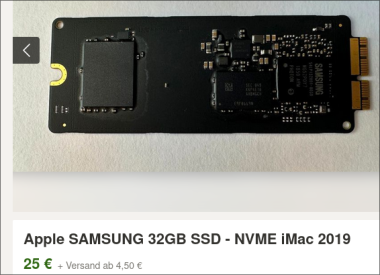Cursed 32 Gig NVMe drive?
Can anyone explain the purpose of a 32 gig NVMe SSD?
I think it's quite an apple thing to install such a stupidly tiny drive into a computer, but on the other hand it doesn't seem right. This can't be a system drive can it? But what else could it be? This is like an impractical, high-speed USB drive that requires disassembly of the computer to remove...
